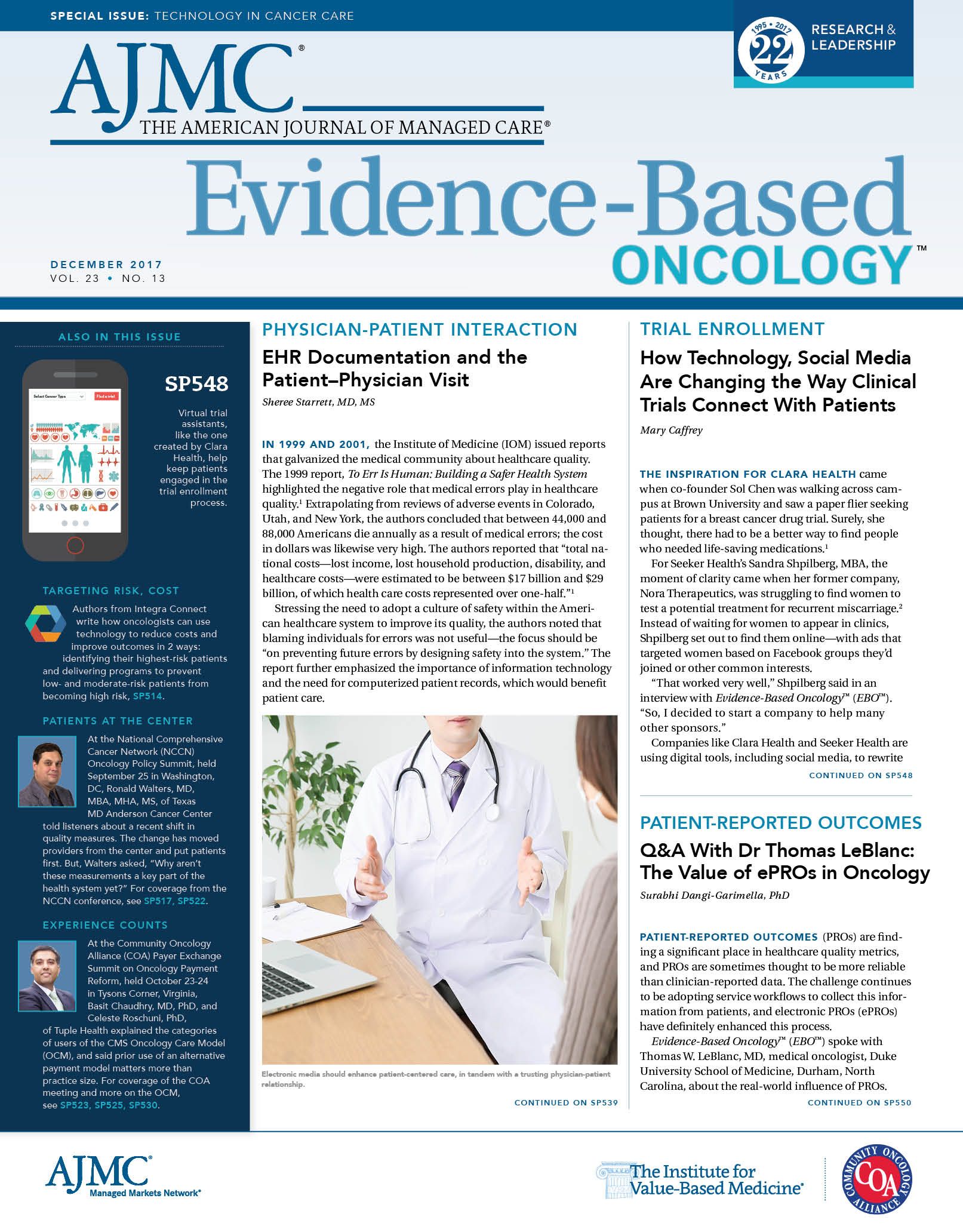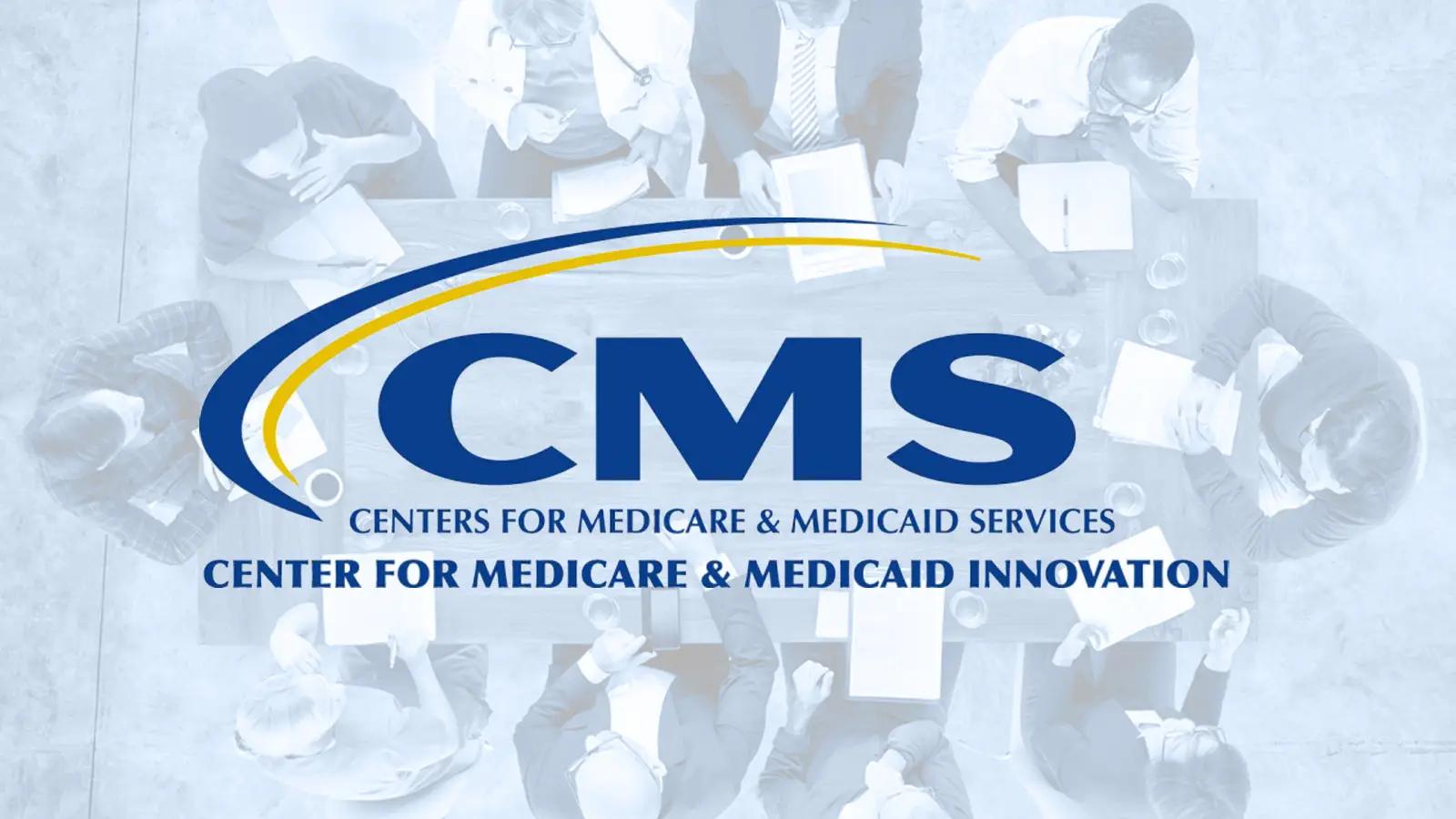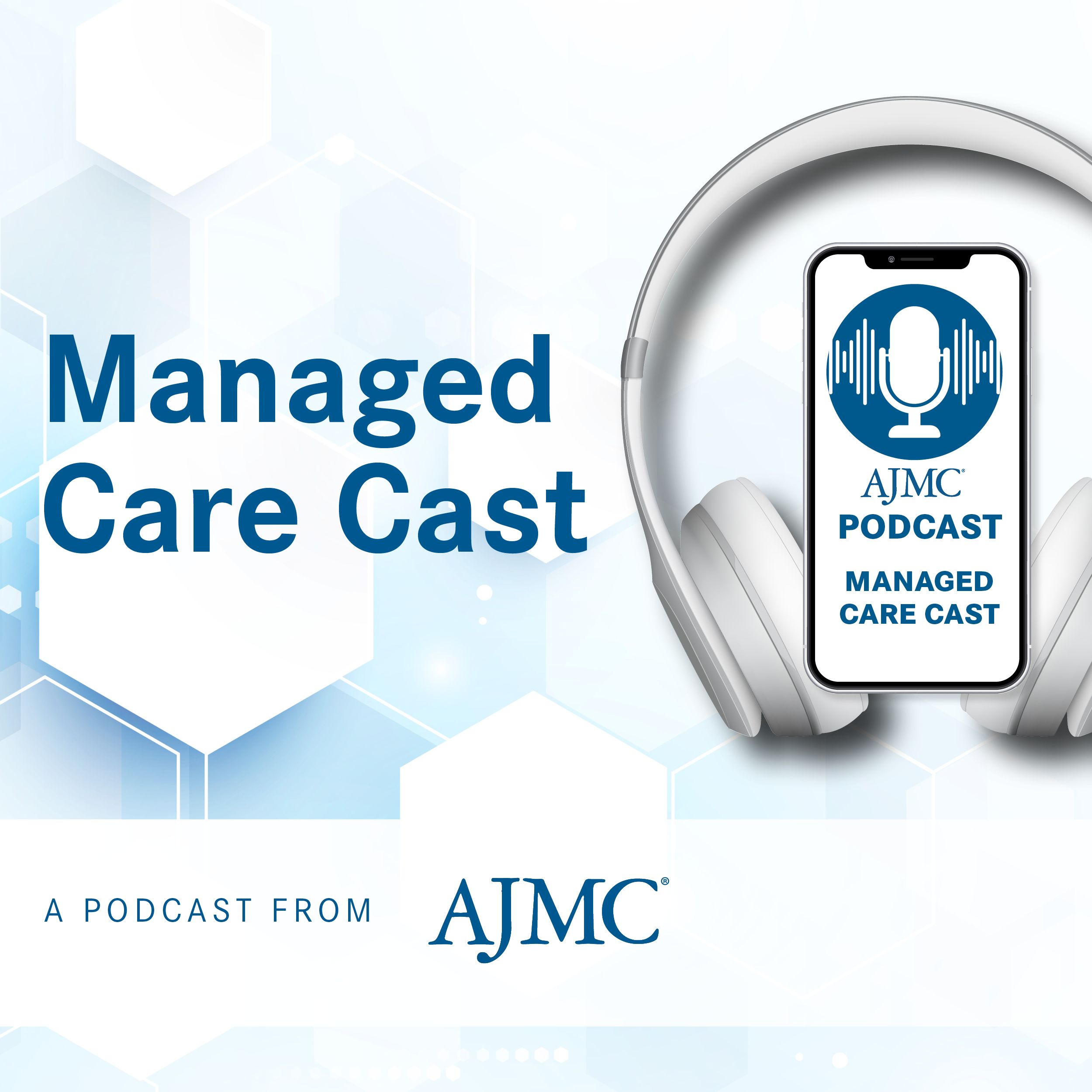Publication
Article
Evidence-Based Oncology
How Technology, Social Media Are Changing the Way Clinical Trials Connect With Patients
Author(s):
New companies are finding patients for clinical trials in remote locations and trimming months off the enrollment process.
THE INSPIRATION FOR CLARA HEALTH came when co-founder Sol Chen was walking across campus at Brown University and saw a paper flier seeking patients for a breast cancer drug trial. Surely, she thought, there had to be a better way to find people who needed life-saving medications.1
For Seeker Health’s Sandra Shpilberg, MBA, the moment of clarity came when her former company, Nora Therapeutics, was struggling to find women to test a potential treatment for recurrent miscarriage.2 Instead of waiting for women to appear in clinics, Shpilberg set out to find them online—with ads that targeted women based on Facebook groups they’d joined or other common interests.
“That worked very well,” Shpilberg said in an interview with Evidence-Based Oncology™ (EBO™). “So, I decided to start a company to help many other sponsors.”
Companies like Clara Health and Seeker Health are using digital tools, including social media, to rewrite the rules of engagement that connect researchers with patients for clinical trials. In the process, company leaders say they are not only shaving months off recruitment schedules, but also finding more patients from minority groups and from rural areas. Studies show these populations need more representation in trials.3-5
Technology is poised to do more than change the way patients are recruited for clinical trials, however. As Belinda Tan, MD, PhD, co-founder and chief medical officer of Science 37, explained to EBO™, integrating telehealth and personal health technologies, like smartphones or Apple Watches, will further erode barriers to participation. Patients can be supervised remotely, with assistance from a local physician or nurse, while study drugs are shipped directly to their homes. Besides patient recruitment, Science 37’s NORA platform (no connection to Nora Therapeutics) for Network Oriented Research Assistant, meets FDA digital signature requirements6 and helps pharmaceutical sponsors with digital data collection.6 Tan’s fellow co-founder, Noah Craft, MD, PhD, DTMH, has said the minority enrollment in Science 37’s cancer trial pools is 3 times that of a standard trial.7
Tan saw what NORA could do in 2015, when Genentech used the platform to create 1 “meta-site” among more than 60 in a large international clinical trial. Science 37 was contracted to recruit 5 patients a year but instead recruited twice that number. “That was a huge win,” Tan said. “It was just a case scenario of what we could do.”
Even if they are not yet using telehealth for virtual trials, pharmaceutical companies can use digital tools like Apple’s ResearchKit to develop their own apps to connect with patients and collect data on patient-reported outcomes.8
Right now, there isn’t much collaboration with payers in this area, but those on the leading edge say there’s no reason why this can’t change. In particular, Tan would like to see solutions for hurdles in trials that require patients to already have had gene sequencing, which payers won’t fund.
Democratizing Clinical Trials
Both Shpilberg and Clara Health co-founder and CEO Evan Ehrenberg, PhD, say that unlike recruitment methods of old, these new strategies start with the patient. “For a long time, we’ve had a physician-centered approach—almost all the referrals came from hospital sites,” Ehrenberg told EBOTM in an interview. Putting patients in “the driver’s seat,” is crucial, he said, because sometimes physicians don’t know about every trial or don’t have an incentive to refer their patient to one based outside the academic center where they practice.
Contrast this with a process that starts with patients seeing what Shpilberg calls a “patient-friendly” ad on Facebook, which connects that person directly to a set of prescreening questions to find out if he or she is a potential fit. “We’re turning the process upside down,” she said.
Clara Health shares an enormous amount of content with users. Its website9 has information on every trial registered on Clinical-Trials.gov, and it seeks to match patients with trials not only by condition, but also with help from an online digital assistant who offers to chat with users when they reach the site. Clara Health also features blogs about the clinical trial process to educate patients or caregivers.
When the company works with pharmaceutical sponsors, “our role is to make the trial as easy to access as possible,” Ehrenberg said. The presentation on ClinicalTrials.gov doesn’t tell patients what to do if they nd an appropriate trial. In the past, if a patient found a phone number for a study coordinator on the site, it might only be answered during business hours.
“If patients have a serious medical condition, they just give up,” he said. Clara Health’s role is to take the “heavy lifting” out of the enrollment process to keep patients engaged. When necessary, the company can connect patients with groups that pay for travel and expenses to take part in a trial, and it also helps patients apply for nancial assistance.
Language matters, Ehrenberg said, and it’s something Clara Health is trying to change. “We encourage our sponsors, when they talk about participants, to treat them like people, as opposed to just numbers,” he said. “A lot of times that doesn’t happen; perhaps their IRB [Institutional Review Board] thinks it isn’t appropriate... but we don’t think people should be referred to as ‘test subjects.’”
Modern Marketing, Meeting IRB Standards
Two years in, Seeker Health has been involved in 22 clinical trials, with about 40% in oncology therapies, 40% in rare disease, and 20% in women’s health therapies, Shpilberg said. In the process, it has developed standards for reaching out to patients in cost-effective ways that still pass muster with IRBs. Seeker Health can target ads at subpopulations that have previously shown an interest in specific cancers or rare diseases, and it can even target them by finding common threads among these groups of potential patients that have nothing to do with their medical condition. For example, in the first venture, Shpilberg discovered the group of women she was seeking favored a popular novel, and that offered another recruitment path.
At the same time, Seeker Health must take steps to keep prospective trial participants from being swayed by factors other than the ad itself. Seeker Health employs a tool that achieves “comment suppression,” which means that even if an online user tries to comment on the ad, those statements remain hidden from other users. This way, Shpilberg said, no misinformation about the study or the drug is spread online.
Are new regulations needed? Shpilberg says no; all ads must meet existing FDA requirements for enrolling patients, as well as privacy regulations under the Health Insurance Portability and Accountability Act and the Health Information Technology for Economic and Clinical Health Act. A June 2017 document published by Harvard Catalyst, based on a paper published in the American Journal of Bioethics, spells out the relevant issues for IRBs and researchers and concludes that no new regulations are needed.10,11
Reducing Costs, Targeting Discrete Cancer Types
Both Shpilberg and Science 37’s Tan said cutting months out of the enrollment process will translate into savings and allow pharmaceutical companies to bring products to market faster. If technology offers solutions to rising recruitment costs, this could reverse a trend that has frustrated all parts of the research chain.
A 2016 study prepared for HHS said that maintaining research sites accounted for 9% to 14% of clinical trial costs.12 Another report from Pivotal Financial Consulting LLC found that the percentage of recruited patients who ended up enrolling in trials was declining, and that “unproductive” costs accounted for 66% of what pharmaceutical companies spend on trials.13
Thus, Tan said, the shift toward virtual trials could do something more—it could help smaller biotechs compete by letting them know quickly whether further studies are worth pursuing.
“The benefit of being fast is that it gives enough evidence, enough of a signal to go out and get more investors, or it gives companies con dence to shift resources to something they know has more promise,” Tan said. “If there’s no signal of e cacy there, they can say, ‘OK, let’s not waste more time on this.’”
Oncology, especially, she said, begs for this type of model, where small companies can work on discrete solutions but find patients from all over—and conduct virtual trials with patients supervised in tandem with a local physician. “In cancer, people have talked about how the decentralized trial model would be ideal. We’re going to have more targeted therapies, more molecular [DNA] signatures,” she said.
“Ultimately,” Tan said, “as cancer becomes more like a rare disease, where the percentage of people with a particular pathway with a molecular mutation is very small, you can use this model to reach an entire base of people and not be limited by geography, by having to go to the local cancer center. This becomes a more tenable type of trial to do.”REFERENCES
1. We Are Clara. Clara Health website. clarahealth.com/about. Accessed November 4, 2017.
2. Shpilberg S. Patients in clinical trials: fifty shades of hay. Medical Marketing and Media website. mmm-online.com/features/patients-in-clinical-trials-fifty-shadesof-hay/article/416105/. Published June 1, 2015. Accessed November 4, 2017.
3. Duma N, Vera Aguilera J, Paludo J, et al. Representation of minorities and women in oncology clinical trials: review of the past 14 years [published online November 3, 2017]. J Oncol Pract. doi: 10.1200/JOP.2017.025288.
4. Singh R, Goebel LJ. Rural disparities in cancer care: a review of its implications and possible interventions. W V Med J. 2016;112(3):76-82.
5. Virani S, Burke L, Remick SC, Abraham J. Barriers to recruitment of rural patients in cancer clinical trials. J Oncol Pract. 2011;7(3):172-177. doi: 10.1200/JOP.2010.000158.
6. What is NORA? Science37.com website. science37.com/#nora. Accessed November 5, 2017.
7. Preston J. Here’s what clinical trial utopia may look like. MedCityNews website. medcitynews.com/2017/08/heres-clinical-trial-utopia-may-look-like/. Published August 18, 2017. Accessed November 5, 2017.
8. ResearchKit and CareKit. Apple website. apple.com/researchkit/. Accessed November 5, 2017.
9. Get connected to the right clinical trial. Clara Health website. clarahealth.com. Accessed November 5, 2017.
10. The use of social media in recruitment to research: a guide for investigators and IRBs. Harvard Catalyst Regulatory Foundations, Ethics, and Law Program website. https://catalyst.harvard.edu/pdf/regulatory/Social_Media_Guidance.pdf. Published June 5, 2017. Accessed November 5, 2017.
11. Gelinas L, Pierce R, Winkler S, Cohen IG, Lynch HF, Bierer BE. Using social media as a research recruitment tool: ethical issues and recommendations. Am J Bioethics. 2017;17(3):3-14. doi: 10.1080/15265161.2016.1276644.
12. Sertkaya A. Wong HH, Jessup A, Beleche T. Key cost drivers of pharmaceutical trials in the United States. Clin Trials. 2016;13(2):117-126. doi: 10.1177/1740774515625964.
13. Monteleone J. Patient recruitment: clinical research’s “white whale”? Pivotal Financing Consulting website. pivotalfinancialconsulting.com/single-post/2016/12/09/Patient-Recruitment-Clinical-Researchs-White-Whale. Published December 12, 2016. Accessed November 5, 2017.
Newsletter
Stay ahead of policy, cost, and value—subscribe to AJMC for expert insights at the intersection of clinical care and health economics.
259 Prospect Plains Rd, Bldg H,
Monroe, NJ 08831
© 2025 MJH Life Sciences® and AJMC®.
All rights reserved.







